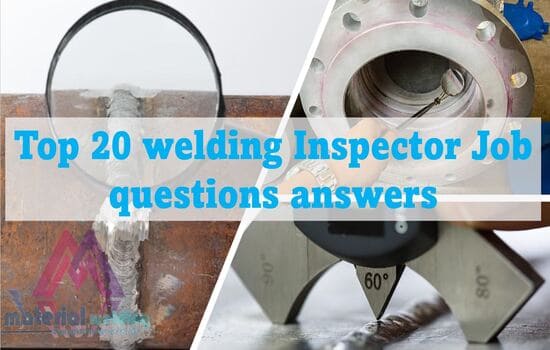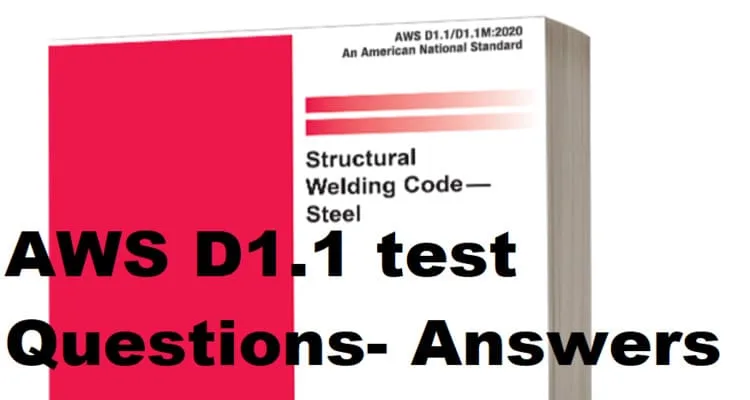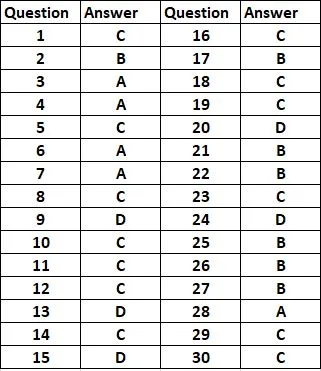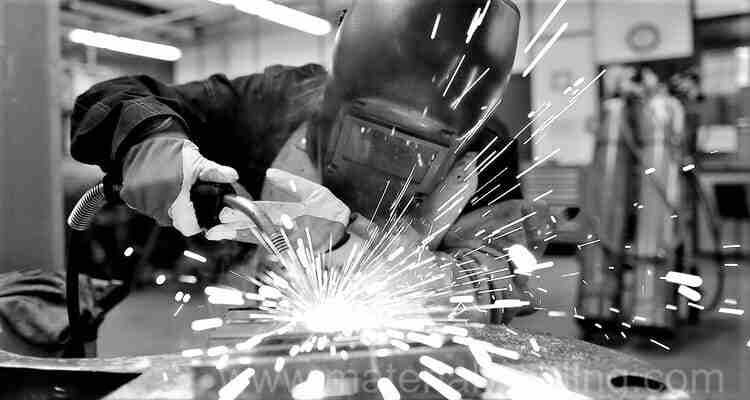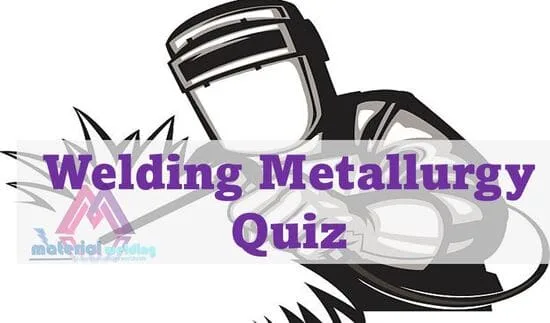30 Important Questions- Answers for Welding Inspectors & Engineers
Here are 30 important questions- answers useful to know for every Welding Inspector, Welding Engineers and Quality person.
1. What is the main purpose of preheat in welding?
To reduce the cooling rate of the weld and heat-affected zone, prevent cracking and warping, and to promote better fusion between the base metal and filler metal.
Read more: Welding Preheat, How much to preheat & Online Calculator.
2. What is the difference between fusion welding and pressure welding?
Fusion welding involves heating the base metal to the point of melting, and then adding filler metal to create a joint. Pressure welding, on the other hand, joins metal parts by applying pressure without heating.
3. What is the main difference between TIG and MIG welding?
TIG welding uses a non-consumable tungsten electrode to heat the metal, while MIG welding uses a consumable wire electrode.
4. What is the typical range of welding current for Stick welding?
- Stick welding (SMAW) current range typically falls between 40-225 Amperes.
5. What is the purpose of an interpass temperature?
- An interpass temperature is the temperature of the base metal prior to depositing the next weld pass. The purpose of controlling interpass temperature is to prevent cracking in the final weld due to rapid cooling and uneven heating.
6. What is the difference between preheat and post heat in welding?
- Preheat is the application of heat to the base metal before welding, while post heat is the application of heat to the weld after welding.
7. What is the difference between a welding procedure specification (WPS) and a procedure qualification record (PQR)?
- A WPS is a written document that describes how welding is to be done, while a PQR is a record of the actual results obtained when welding is done in accordance with a WPS.
8. What is the purpose of using a filler metal?
- Filler metal is used to add material to a joint, increase the strength of the joint, or to provide a similar composition to the base metal.
9. What are the main types of welding defects?
- The main types of welding defects include cracks, porosity, incomplete fusion, incomplete penetration, and distorted or misaligned joints.
10. What is the difference between structural steel and pressure vessel steel?
- Structural steel is used in construction and building applications, while pressure vessel steel is used in the manufacture of boilers, tanks, and other equipment that contains pressurized fluids or gases.
11. What is the difference between AISI 304 stainless steel and AISI 316 stainless steel?
- AISI 304 stainless steel contains 18% chromium and 8% nickel, while AISI 316 stainless steel contains 16% chromium, 10% nickel, and 2% molybdenum. The addition of molybdenum in AISI 316 gives it better corrosion resistance in certain environments.
12. What is the main difference between GTAW and SMAW welding?
- GTAW (TIG) welding uses a non-consumable tungsten electrode and an inert gas shield, while SMAW (Stick) welding uses a consumable electrode, and a shielding gas is not always used.
13. What is the difference between a continuous weld and an intermittent weld?
- A continuous weld is a weld that is made without breaks or interruptions, while an intermittent weld is a weld that is made with breaks or interruptions.
14. What are the most common welding defects?
The most common welding defects include porosity, lack of fusion, undercut, and cracking.
15. What are the main types of non-destructive testing (NDT) used to inspect welds?
The main types of NDT used to inspect welds include radiographic testing, ultrasonic testing, magnetic particle testing, and liquid penetrant testing.
16. What are the main codes and standards used in welding?
Some of the main codes and standards used in welding include AWS D1.1 (Structural Welding Code – Steel), AWS D1.2 (Structural Welding Code – Aluminum), and ASME IX (Qualification Standard for Welding, Brazing, and Fusing Procedures; Welders, Brazers, and Welding, Brazing, and Fusing Operators).
17. What is the purpose of metallurgy in welding?
Metallurgy in welding is the study of the physical and chemical properties of metals and how they respond to heat and pressure during the welding process.
It helps to ensure the proper selection of materials and welding methods to ensure the finished product is strong, durable and resistant to cracking, corrosion, and other defects.
18. What is the difference between ferrous and nonferrous metals?
Ferrous metals contain iron, while nonferrous metals do not.
19. What is the difference between a low-alloy steel and a high-alloy steel?
Low-alloy steels have small amounts of alloying elements added to improve their properties, typically less than 8% alloying element.
High-alloy steels have larger amounts of alloying elements, typically more than 8% alloying elements.
20. What is the difference between carbon steel and stainless steel?
Carbon steel is composed primarily of iron and small amounts of carbon. Stainless steel is a type of steel that contains at least 10.5% chromium, which gives it its corrosion-resistant properties.
21. What is the difference between normalizing and annealing?
Normalizing is a heat treatment process in which a material is heated to a specific temperature above its critical point and then cooled in still air.
Annealing is a heat treatment process in which a material is heated to a specific temperature below its critical point and then cooled at a controlled rate.
22. What is the difference between ductility and toughness?
Ductility is a measure of a material’s ability to deform under stress without breaking. Toughness is a measure of a material’s ability to absorb energy and deform without breaking.
23. What is the difference between tensile and compressive stress?
Tensile stress is stress that causes a material to stretch and elongate. Compressive stress is stress that causes a material to shorten and compact.
24. What is the difference between a full penetration weld and a partial penetration weld?
A full penetration weld goes through the entire thickness of the base metal and joins both sides together, whereas a partial penetration weld does not go through the entire thickness and does not join both sides together.
25. What is the difference between a fillet weld and a groove weld?
A fillet weld is a type of weld that creates a triangular cross-section and is commonly used to join two pieces of metal at a 90-degree angle, whereas a groove weld is a type of weld that fills a pre-made groove and is commonly used to join two pieces of metal at any angle.
26. What is the difference between a butt joint and a lap joint?
A butt joint is a type of joint in which two pieces of metal are placed end to end, whereas a lap joint is a type of joint in which two pieces of metal are placed on top of each other.
27. What is the difference between a continuous weld and an intermittent weld?
A continuous weld is a weld that is made without interruption, whereas an intermittent weld is a weld that is made with breaks or gaps between segments of the weld.
28. What is the difference between a single-pass weld and a multipass weld?
A single-pass weld is a weld that is made in one pass, whereas a multipass weld is a weld that is made in multiple passes.
29. What is the purpose of a destructive testing and when it is usually performed?
A destructive testing is a method used to evaluate the mechanical properties of a welded joint by breaking, bending or cutting the test specimen, it is usually performed to determine the strength and ductility properties of a welded joint, as well as its quality.
Typically, destructive testing is performed after the completion of welding and during the final inspection phase.
30. What is the difference between a visual inspection and a non-destructive testing (NDT)?
A visual inspection is an inspection method in which the welder or inspector visually examines the welded joints and its surrounding areas for defects and imperfections, such as porosity, cracks, lack of fusion, and incomplete penetration.
NDT is a group of techniques (Visual Inspection is one of those NDT technique only) that are used to examine the properties of the material or the integrity of the weld, without causing any damage to the material.
I would recommend studying from the AWS (American Welding Society) and the ASME (American Society of Mechanical Engineers) welding standards and codes and gaining practical experience, it should help you pass the AWS-CWI or international welding engineers’ (IWE) examination.

